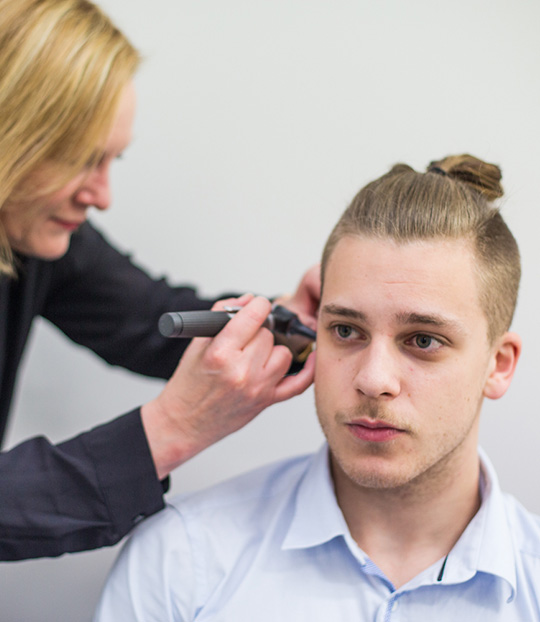
HEARING TEST
Meet Gus. Gus came to a Shout Hearing Healthcare clinic after experiencing a drop in his hearing and ringing in his ears. It is important to have a hearing test if you have any concerns about your hearing. Shout conducts Otoscopy, Tympanometry, Acoustic Reflexes, Audiometry, Speech Testing, CAPD, Vertigo and Balance, Tinnitus, Workplace and pre-employment assessments.
Gus had been to see his favourite band and decided that standing right next to the speakers was the best way to enjoy the music! He had suffered temporary noise damage and his results showed a mild hearing loss. We counselled Gus on the importance of protecting his hearing from further noise damage and advised him to return in seven days to re-assess.
Luckily for Gus, the follow-up results showed his hearing had recovered; you can experience a temporary hearing threshold shift from exposure to loud noise. Gus’s experience shows that healthy hearing is important at ANY age!
Being worried about your hearing, or noticing any changes, is a great reason to seek expert advice at a Shout Hearing Healthcare clinic!
Types of Hearing Tests
Otoscopy
Our audiologist will conduct a visual examination of your ear canal using an instrument called an ‘otoscope’ or a video otoscope. They will check for ear wax, blockages, or any visible signs of a problem with your ear canal or ear drum that might impact the results of your hearing test. Our video otoscope allows us to take pictures of your ear canal and ear drum which can be forwarded to your GP or ENT. People are usually quite surprised when they see a picture of their ear drum. It looks nothing like a drum!
Tympanometry
Tympanometry is an examination of your middle-ear function. Our audiologist will be checking to see how well your ear drum responds to air pressure. This test can identify anything that may inhibit motion of the eardrum such as fluid, an infection, or eustachian tube dysfunction. A problem with your middle ear can cause a deterioration in your hearing.
Acoustic Reflexes
Acoustic reflex testing and tympanometry used together are considered best practice to assess middle ear function. Our audiologist will be checking to see how the stapedius muscle contracts when exposed to a brief loud sound.
Audiometry
Pure tone audiometry consists of two components: air and bone conduction testing.
Air conduction identifies the faintest sound you can detect through earphones at various sound frequencies. Bone conduction determines the faintest sound you can hear by stimulating the cochlea with a bone vibrator.
Following your test our audiologist will evaluate the results and spend time discussing these with you, addressing any concerns you may have. Depending on the results, they may develop a rehabilitation plan or refer you to either a general practitioner or specialist. If our audiologist believes you have a hearing loss, they will discuss the various options available to you, which may include communication strategies, group rehabilitation, hearing aids and assistive listening devices.
Speech Testing
Speech audiometry is used to determine how well you discriminate speech sounds. This information helps us to assess your functional ability; how the hearing loss is affecting your communication. Speech testing helps us to put together a complete picture of your hearing status and forms an important consideration for rehabilitation.
Take Immediate Action
Too often, we see people delay seeking treatment which can sometimes lead to further difficulty.
If you have any concerns about your hearing or that of a loved one, we urge you to take immediate action by making an appointment with us at our clinic, or call us to discuss your situation and concerns; we are here to help!
Learn more about the benefits of better hearing.
Discover how rapidly hearing aid technology has advanced.
